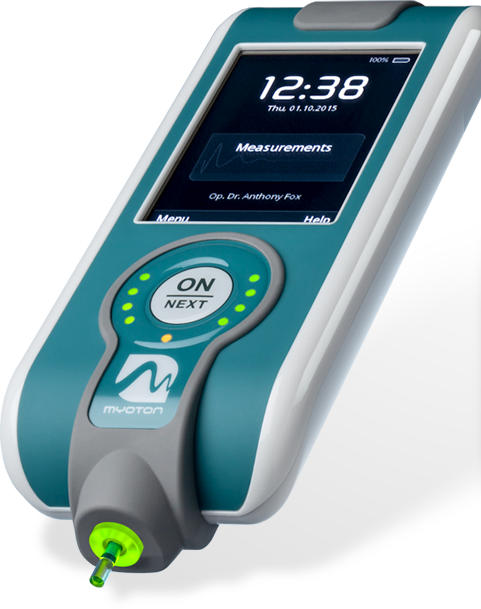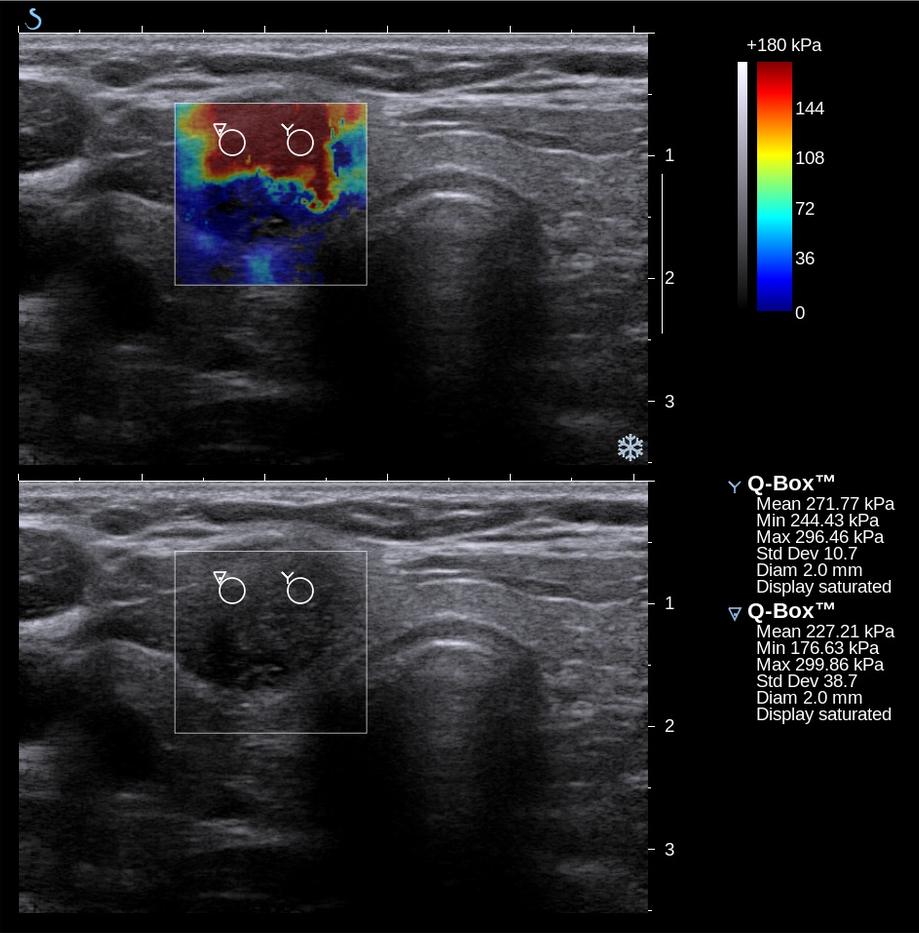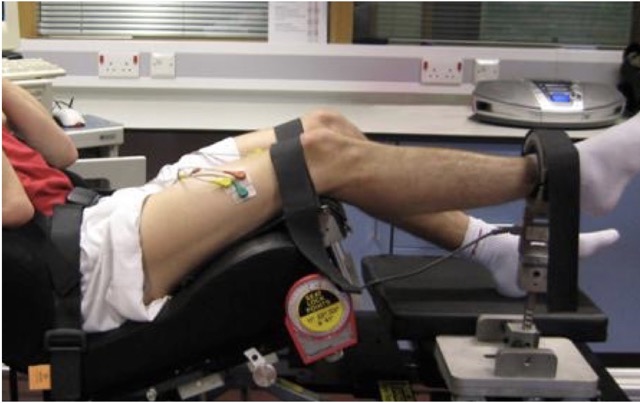I first got the idea for MuscleMap when I was in Taiwan getting a massage. The therapist worked on my shoulders for 30 minutes, and they felt completely different afterward. I wanted to measure that change somehow, to quantify what had happened. That curiosity is why MuscleMap exists today.
But MuscleMap might or might not be the right tool for you. If you are curious about other ways to measure muscle properties, it helps to get a lay of the land. Different tools capture different aspects of what your clients mean when they say "tight": some focus on stiffness, some on soreness, and others on activation.
As a therapist, you already use your hands every day to make judgments about tissue. These devices do not replace that. They add different types of information. Below, I will walk you through the most common alternatives, what they actually measure, and where each one fits in practice.
1. MyotonPRO

The MyotonPRO delivers a quick mechanical tap to the skin and records how the tissue oscillates. From this, it calculates stiffness, elasticity, and tone.
Strengths
The main strength of the MyotonPRO is speed and consistency. Each reading takes only a second or two, and the device has been validated in hundreds of published studies. If you are working in a research-heavy environment, it is one of the most trusted devices available.
Limitations
The limitation is that the readings mostly reflect superficial tissue such as fascia, skin, and the top layers of muscle. It does not always capture the deeper contractile tissue like the erector spinae that you may care about most in practice. It also struggles with very thin muscles, usually under three millimeters.
Citations:
- MyotonPRO overview – https://myoton.com/technology/
- Tissue crosstalk limits – https://www.nature.com/articles/s41598-023-27742-w
- Myoton vs elastography differences – https://onlinelibrary.wiley.com/doi/10.1111/sms.70095
2. Ultrasound Elastography

Ultrasound elastography uses sound waves to "see" how tissue deforms under stress. Many researchers consider it the gold standard for stiffness measurement.
Strengths
Its strength lies in depth and precision. Elastography can image both superficial and deep tissue layers, providing detailed, real-time maps of stiffness. Because of this, it is frequently used as a reference standard in clinical research.
Limitations
It is important to note that elastography measures stiffness, not tension. Stiffness here means how quickly mechanical waves travel through the tissue, which reflects its material properties at rest.
This is different from tension, which refers to how much a muscle resists when you press into it. The two are related, but not interchangeable.
The other limitation is accessibility. Machines cost $20,000 or more and require specialized training to operate. For most therapists, it is not practical to use in daily sessions.
Citations:
- Phantom study on tissue layers – https://www.nature.com/articles/s41598-023-27742-w
3. Palpation (Hands-On Assessment)

Palpation, using your hands to feel resistance, density, and sensitivity, is still the foundation of manual therapy practice.
Strengths
The strength of palpation is immediacy. You do not need any equipment. Your hands combine what you feel with client feedback and your clinical experience. This makes palpation incredibly versatile and always available.
Limitations
The limitation is subjectivity. Two therapists might feel the same muscle differently, and there is no objective number to demonstrate progress across sessions.
Citations:
- Clinical palpation variability – https://pubmed.ncbi.nlm.nih.gov/14626764/
- Reliability of manual palpation – https://pubmed.ncbi.nlm.nih.gov/24349532/
4. Pressure Algometers

Algometers measure how much pressure it takes before a client reports pain. This is the pressure pain threshold (PPT) and it is a direct way to quantify soreness or sensitivity.
Strengths
The strength of algometry is that it turns soreness into a number. If you are tracking how sensitive a spot is, an algometer lets you see whether the tissue tolerates more or less pressure over time. This makes it especially useful in pain-focused research and in clinics that treat chronic pain conditions.
Limitations
The limitation is that algometers rely on client reporting. You press gradually until the client says "that hurts," which means the measure is partly subjective. Stress, mood, fatigue, and even trust in you can shift that threshold from day to day. Algometers also do not measure stiffness or resistance. They only capture sensitivity.
Citations:
- Massage raises PPT (less soreness) – https://doi.org/10.1186/s12891-015-0729-5
- Systematic review of massage and pain – https://pubmed.ncbi.nlm.nih.gov/39256711/
5. Electromyography (EMG)

EMG records the electrical activity of muscles. Surface EMG uses electrodes on the skin, while intramuscular EMG uses fine needles.
Strengths
The strength of EMG is in motor control. It shows how strongly and when a muscle fires, which makes it valuable in rehab and sports performance. If you want to assess timing, recruitment, or neural recovery, EMG delivers.
Limitations
The limitation is that EMG does not tell you about stiffness or soreness. It measures electrical signals only, and results can vary depending on electrode placement or skin preparation.
Citations:
- EMG use in rehab – https://pubmed.ncbi.nlm.nih.gov/21462893/
- Surface EMG reliability – https://pubmed.ncbi.nlm.nih.gov/17342780/
6. MuscleMap

MuscleMap measures how much a muscle resists when pressed. By recording both force and displacement, it gives you a tension score focused on the muscle belly.
Strengths
The strength of MuscleMap is practicality. It was built for therapists who want a simple, objective number without the complexity of lab equipment. It helps you show clients what you feel and track changes over time.
Limitations
The limitation is that MuscleMap does not measure soreness or range of motion directly. Like any device, it requires consistent technique for reliable readings.
See Why Your Muscles "Feel Tight" (Even If They Aren't)
Citations:
- General measurement error in sensors – https://arxiv.org/abs/1004.0874
- Massage reduces stiffness short-term (elastography) – https://pubmed.ncbi.nlm.nih.gov/24856792/
Comparison Table
| Tool | Price Range | What It Measures | Tension | Soreness | Objective? | Best For |
|---|---|---|---|---|---|---|
| MuscleMap | $199 + $39/mo | Displacement / Tension | ✔ | ✖ | ✔ | LMTs, PTs, clinics |
| MyotonPRO | $8k–$12k | Oscillation / Stiffness | ✔ | ✖ | ✔ | Research labs, clinics |
| Ultrasound Elastography | $20k+ | Tissue stiffness imaging | ✔ | ✖ | ✔ | Hospitals, research |
| Palpation (Hands) | $0 | Therapist feel | ✔ | ✔ | ✖ | All daily practice |
| Pressure Algometer | $500–$2k | Pressure pain threshold | ✖ | ✔ | ✔ | Clinics, pain studies |
| EMG | $1k–$10k | Electrical activation | ✖ | ✖ | ✔ | Rehab, performance labs |
Takeaway
There are many ways to measure muscle properties, and each tool captures a different part of the picture. Some focus on stiffness (Myoton, elastography, MuscleMap), others on soreness (algometers), and others on activation (EMG). Palpation, of course, is always the foundation of hands-on work.
The purpose of this article is to help you understand what options exist and what each one is best suited for, so you can decide which tool, if any, fits your practice. MuscleMap was built with therapists in mind, but whether you choose it or another method, the mission is the same: to bring more clarity and confidence to how you and your clients understand muscle care.
